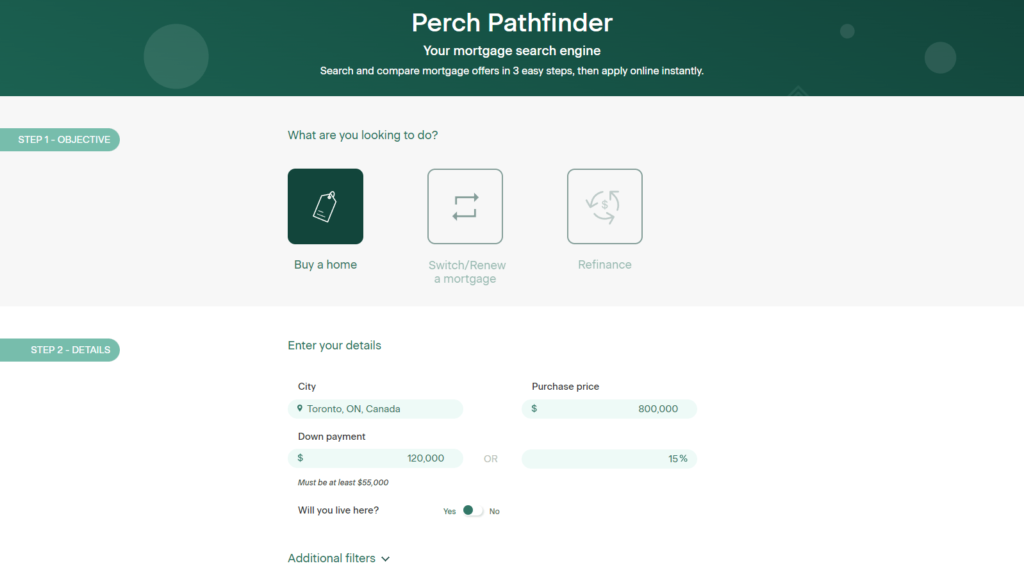Before reading this article, we assume that you know what a home equity line of credit (HELOC) is. If you don’t, check out our HELOC page to learn more before jumping into this article.
Why maximize cash flow?
Rather than focusing on the lowest mortgage rate, many people instead prioritize the lowest mortgage payment. There are a number of reasons you might want to focus on your mortgage payment, but here are a few examples:
- Your financial position is constrained and you need to optimize cash flow (ex: lost employment, rising variable rates, etc).
- You’re a rental property investor and are more concerned with positive cash flow each month so that your investment generates income.
- You’re earning a great rate of return in other investments and would rather keep investing money there than paying down your mortgage
- You want to buy a more expensive house than you can currently afford, but expect a salary increase in the next few years
Whatever the reason, the goal is to maximize cash flow and we’ll discuss how a HELOC can help you.
Example of maximizing cash flow
To demonstrate the concept of maximizing cash flow, let’s go through an example scenario. When you create a Perch profile, we make it specific to your situation but the benefits outlined below will be generally true regardless of your circumstances. Our specific scenario here assumes a $600,000 mortgage on a $750,000 property at a 4.50% fixed rate with a 25-year amortization period.
Option 1: Standard mortgage payments
In this scenario, we assume that the client only has a mortgage with no HELOC. The regular monthly mortgage payment would be $3,320.84 over the 5 year term. Of that amount, roughly $1,100 is going towards principal and $2,220 is going towards interest. Over a 5-year term, you would have paid $126,029 in interest and their remaining mortgage principal would be $526,778.
Option 2: Readvanceable HELOC
In this scenario, we assume that the client got a readvanceable HELOC with a total credit limit of $600,000 with the goal of minimizing their mortgage payment (and maximizing their monthly cash flow). The payment would still be $3,320.84, but in the first month the portion of their mortgage payment that was principal was $1,091.65 and they’d be able to withdraw that from their HELOC back into their chequing account to make their effective monthly payment $2,229.19 ($3,320.84-$1,091.65). This is 33% lower than the standard mortgage payment and can make a huge difference.
Naturally, as you increase your HELOC balance to take out the principal payments you will then start paying interest on that amount. Over a 5-year term, you would have paid $134,690 in interest and your remaining mortgage principal would be $600,000 (because you’ve made no principal payments).
| Option 1: Standard Mortgage | Option 2: Readvanceable HELOC | |
| Total Interest Paid | $129,029 | $134,690 |
|
Monthly Mortgage Payment |
$3,320.84 | $2,229.19 |
How does this apply to me
So you may be wondering: why on earth would anyone want to pay extra interest? Well, there are a lot of potential reasons. Let’s name a few of them:
Buying beyond your means temporarily
Assuming the same rate and amortization, your net monthly payment on an $894,000 readvanceable HELOC would be the same as a $600,000 standard mortgage payment. That is $294,000 (+49%) in additional borrowing capacity that you can take on and could dramatically increase the budget for properties that you’re looking for.
However, the goal is that you eventually can start making principal payments and this is more geared towards home buyers that are earlier in their careers and expect higher wages in the near future. What people typically end up doing is that they buy a home that only meets their needs for the next 1-3 years because that’s all their budget can afford and then sell it to upsize into the home they qualify for later. Doing so comes at a massive cost, and we’ll use our scenario to illustrate what that could look like:
The penalty to break your 5-year fixed rate mortgage 3 years into a 5-year term:
$9,500 or more
The cost to sell your current home (legal, real estate agent, etc):
$45,000 or more
The closing costs on the next home you buy (land transfer taxes, legal, etc):
$15,000 or more
Conservatively, this person would incur around $69,500 in expenses 3 years from now to get into a larger property when they could’ve instead incurred $5,661 in additional interest. That’s not to mention the psychological benefits of not having to sell and buy a new home altogether.
Adjustable Rate Mortgage Holders
Prime rates have gone up 2.25% in 2022 thus far and on a $600,000 mortgage that would mean roughly a $656 monthly mortgage payment increase. That is, assuming they have an adjustable mortgage rate (meaning amortization stays the same but payments change, versus a variable rate mortgage where the amortization changes but payments stay the same).
Considering the net mortgage payment on a re-advanceable HELOC is almost $1,100 less, that would be more than enough to fully offset the rate increases without the stress of a tighter mortgage position.
Real Estate Investors
Typically, all interest paid on a rental property is deductible as an expense against the rental income which reduces the net cost of this strategy. Investors assume they can get better returns on their investments than the interest rates of a mortgage, so they would prefer to pay more in interest over the long term for the opportunity to have more cash now to invest. With higher net cash flow, investors can increase the size of their real estate portfolio or invest their money elsewhere.
Having the readvanceable HELOC also reduces the risks of a rental property (ex: the unit is vacant) by having the HELOC to offset lost rental income if required.
How do I get a HELOC?
So, with all that being said, if you’ve determined that maximizing cash flow with a HELOC might be a good idea for you, how do you get one?
For owners:
First, create a Perch profile and see what equity is available in your home. We’ll help you plan when to get one and how to use it strategically. Typically you can either get a HELOC by switching to a lender that offers one (by breaking your mortgage early or waiting until your mortgage matures to switch with no penalties) or by getting a HELOC from your existing mortgage lender if they offer it. In both scenarios you will need to qualify.

For buyers:
Create a Perch profile and when you find the right property, our mortgage advisors will help you determine the value of a HELOC based on your specific situation.

 Ali
Ali






